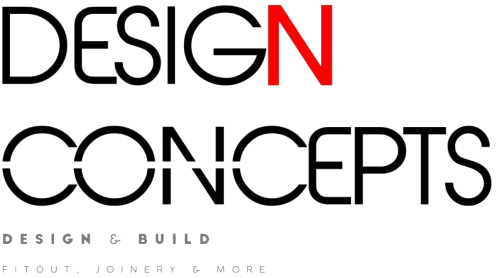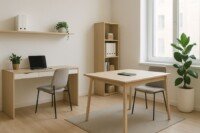by Design Concepts Global
Share

Sustainable interior design methods have grown increasingly significant in today’s world, when environmental awareness is more crucial than ever. Eco-friendly and sustainable interior design solutions not only decrease environmental impact, but also result in healthier, more enjoyable living and working environments. This blog examines how eco-friendly interior design can be achieved via the use of sustainable building materials and techniques.
Read More About Office Interior Designer in Dubai
The Importance of Sustainability in Interior Design
Sustainability and interior design go hand in hand. As we face increasing environmental challenges, the design industry is embracing sustainability to reduce its carbon footprint and promote healthier environments. Sustainable interior design prioritizes the use of environmentally friendly building materials and practices to minimize waste and conserve resources.
Sustainable Building Materials
Choosing sustainable building materials is a fundamental aspect of eco-friendly interior design. These materials are often renewable, recycled, or sustainably sourced, ensuring minimal impact on the environment. Some popular sustainable building materials include:
- Recycled Wood: Repurposing wood from old structures reduces the need for new timber, conserving forests and reducing waste.
- Bamboo: A rapidly renewable resource, bamboo is a strong, durable, and versatile material used in flooring, furniture, and wall coverings.
- Cork: Harvested from the bark of cork oak trees, this material is renewable, biodegradable, and offers excellent insulation properties.
- Recycled Metal: Using recycled metal for fixtures and furniture reduces the demand for new metal production, conserving energy and resources.
- Low-VOC Paints: Volatile organic compounds (VOCs) in traditional paints can harm indoor air quality. Low-VOC paints are a healthier alternative, emitting fewer pollutants.
Green Building Materials for Zero Waste Interior Design
Zero waste interior design focuses on reducing waste throughout the design process. This approach involves selecting green building materials that are recyclable, biodegradable, or made from recycled content. Key elements of zero waste design include
- Modular Furniture: Designed for disassembly and reuse, modular furniture helps reduce waste by allowing parts to be replaced or upgraded without discarding the entire piece.
- Recycled Glass: Used in countertops, tiles, and decorative accents, recycled glass adds aesthetic appeal while reducing landfill waste.
- Reclaimed Brick: Salvaged from demolition sites, reclaimed brick adds character and sustainability to interior walls and features.
Sustainable Designs for Commercial Buildings
Sustainable office design is gaining momentum as businesses recognize the benefits of eco-friendly workspaces. Incorporating sustainable practices in office design not only reduces environmental impact but also enhances employee well-being and productivity. Key strategies include
- Energy-Efficient Lighting: LED lighting consumes less energy and lasts longer than traditional bulbs, reducing energy consumption and maintenance costs.
- Ergonomic Furniture: Prioritizing employee comfort with ergonomic furniture reduces the need for frequent replacements, contributing to sustainability.
- Indoor Plants: Greenery improves air quality, reduces stress, and enhances the overall aesthetic of office spaces.
The Future of Eco-Friendly Interior Design
The ongoing use of environmentally friendly methods and supplies is essential to the future of interior design. We may anticipate seeing more creative solutions as technology develops, which will increase the effectiveness and accessibility of sustainable design. We can develop beautiful and environmentally friendly spaces by embracing sustainability and interior design.
To sum up, eco-friendly procedures, zero waste ideas, and sustainable building materials are crucial elements of contemporary interior design. Both homeowners and designers may help create a more sustainable future by making thoughtful decisions that will show our dedication to the environment in our homes and workplaces.





